Fashion designer Konstantin Goncharov (1969–1998) was one of Timur Novikov’s close friends and colleagues, participant of exhibitions and projects organized by the New Academy of Fine Arts, whose costumes are now in the collections of the State Russian Museum, State Hermitage Museum, Mariinsky Theatre, and private collections. However, as of now, a monograph that would bring together and classify information about this artist, the “Little Prince” as contemporaries used to call him, is yet to be published. [1]
Garage Archive in St. Petersburg contains a number of records related to the practice of Konstantin Goncharov and his work for the Strict Young Man fashion gallery. Photographs, newspaper articles, archival materials, and the coat sewn by Goncharov for Georgy Guryanov came in as part of the Andrei Khlobystin collection, while video documentation of the opening of the show Renaissance and Resistance is part of Sergey Chubraev’s archive.
The story of the Strict Young Man atelier begins with the acquaintance of Konstantin Goncharov and Alexey Sokolov, who studied at the same school, two years apart, and, “having accidentally met again at some point, never parted anymore”. [2] After graduating from high school Goncharov enrolled in a sewing college and spent some time working in a men’s tailoring shop. But already toward the end of the 1980s, he started collaborating with Zhanna Aguzarova and the band Kino making outfits for the musicians’ concerts and photo shoots. In 1987 Goncharov met Timur Novikov and a year later began studying at the Free University. In an interview with Yekaterina Andreeva, Georgy Guryanov and Oleg Kotelnikov underlined the aesthetic influence that Goncharov had on Timur Novikov, leading to the latter’s fascination with ballet and fashion. [3] In 1989, Konstantin Goncharov attended a meeting in the palace of the Znanie (Knowledge) Society Central Lecture Hall, where Timur Novikov announced the renaming of the New Academy of All Arts into the New Academy of Fine Arts.
Meeting Timur Novikov played an important role in Goncharov’s artistic self-identification. In one of the interviews, he recounts that Strict Young Man was essentially invented by Novikov.4 The name of the atelier first turned up in 1988—deriving from Timur’s enchantment with the eponymous 1935 film by Abram Room, whose main protagonist Grisha Fokin—“an ideal Komsomol athlete”—would become one of the prototypes for the new classicist hero. However, Goncharov admitted that he was not as fascinated by Fokin’s on-screen style and accepted the name mainly due to the “combination of words”5 and the fact that “strict” has a variety of semantic aberrations in Russian.
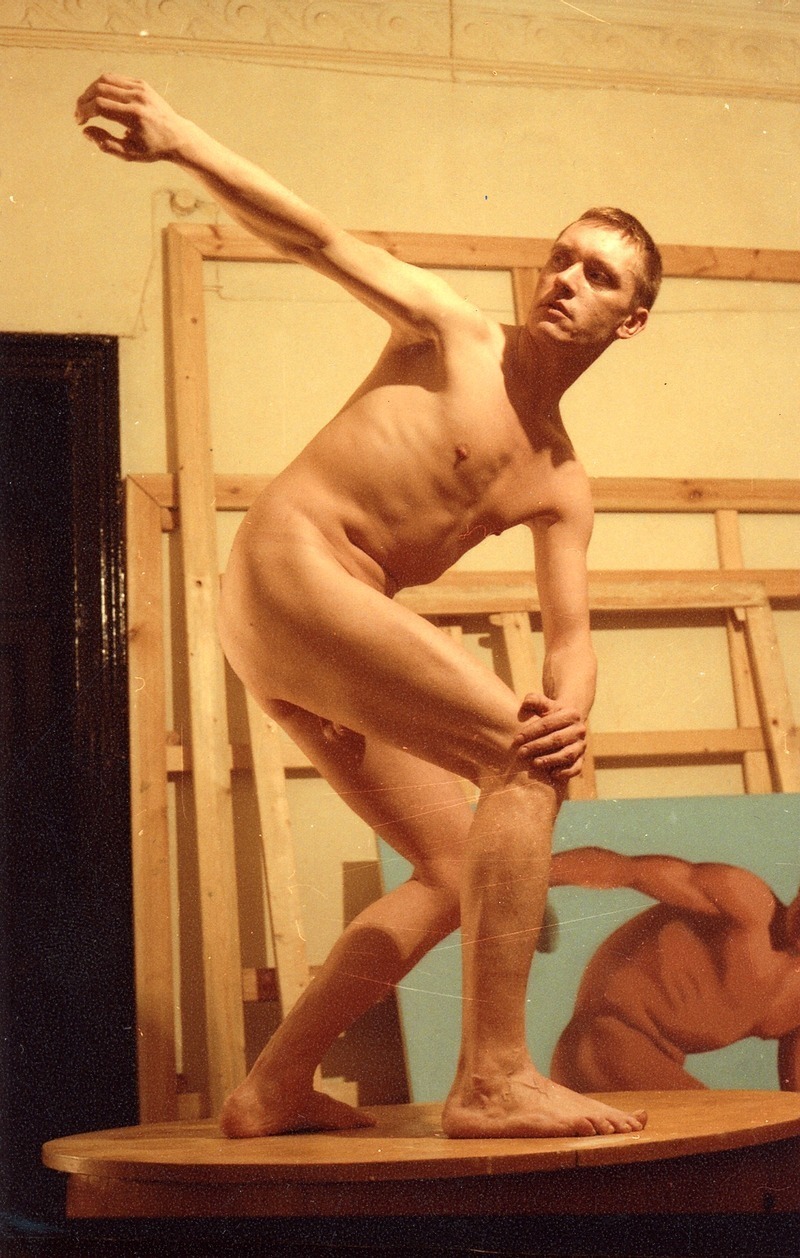
In 1990, Konstantin Goncharov entered the circle of artists representing St. Petersburg’s New Academy and began contributing to its key projects and exhibitions, including Academism and Neo-Academism (Lenin Museum, Marble Palace, 1991), Renaissance and Resistance (State Russian Museum, Marble Palace, 1994)6, the photoshoot Olympus on the Roof (St. Petersburg, 1994), Self-Identification. Trends in the Art of Petersburg from 1970 to the Present Day (Copenhagen, Kiel, Berlin, Oslo, Sopot, St. Petersburg, 1995–1996), Passiones Luci (1995), and Metaphors of Renunciation (Badischer Kunstverein, Karlsruhe, 1996) among others.
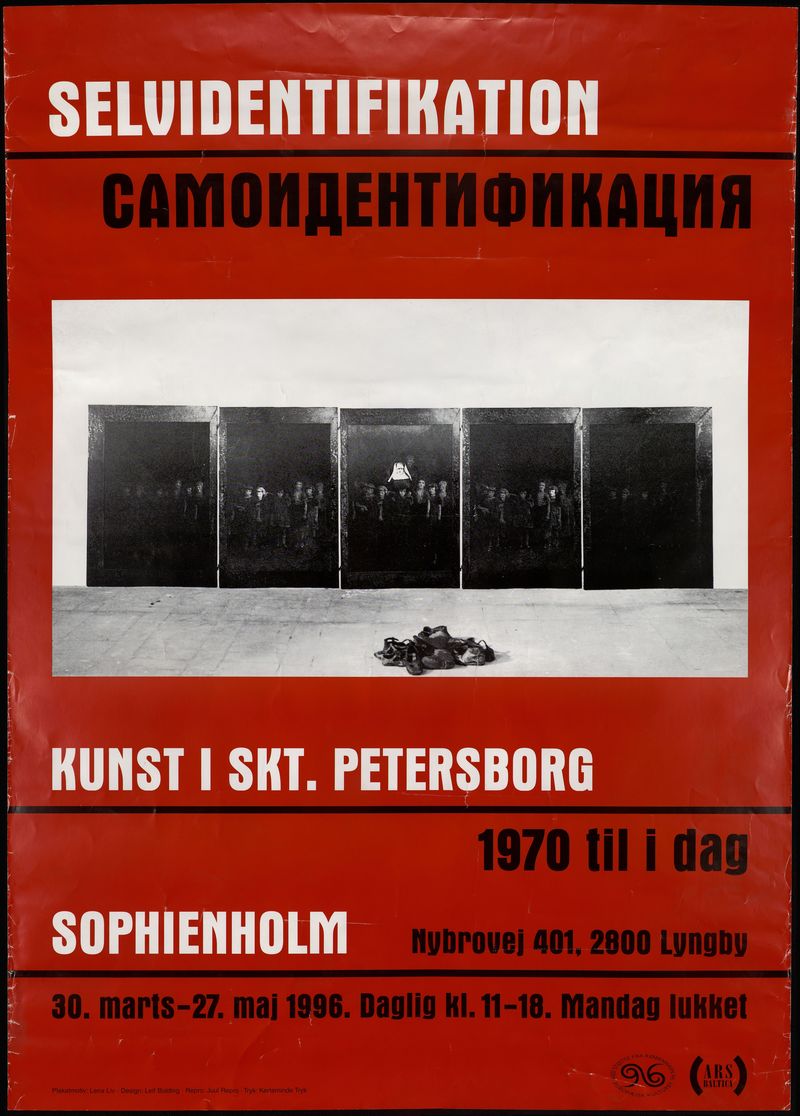

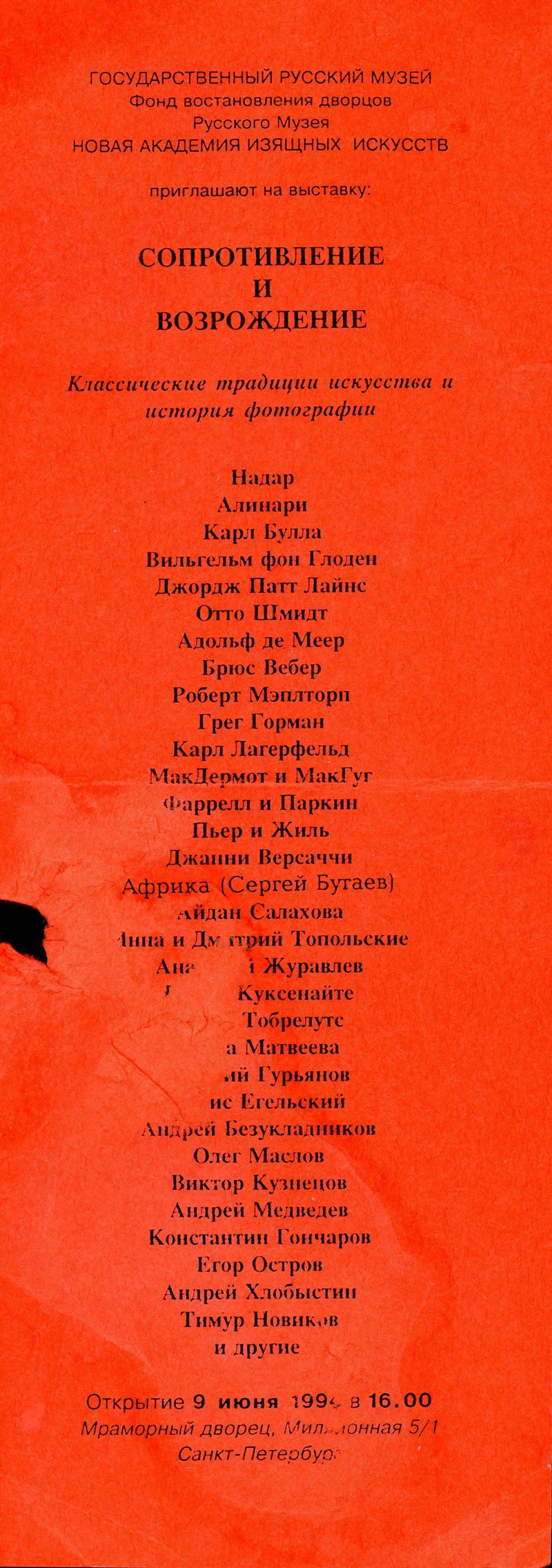
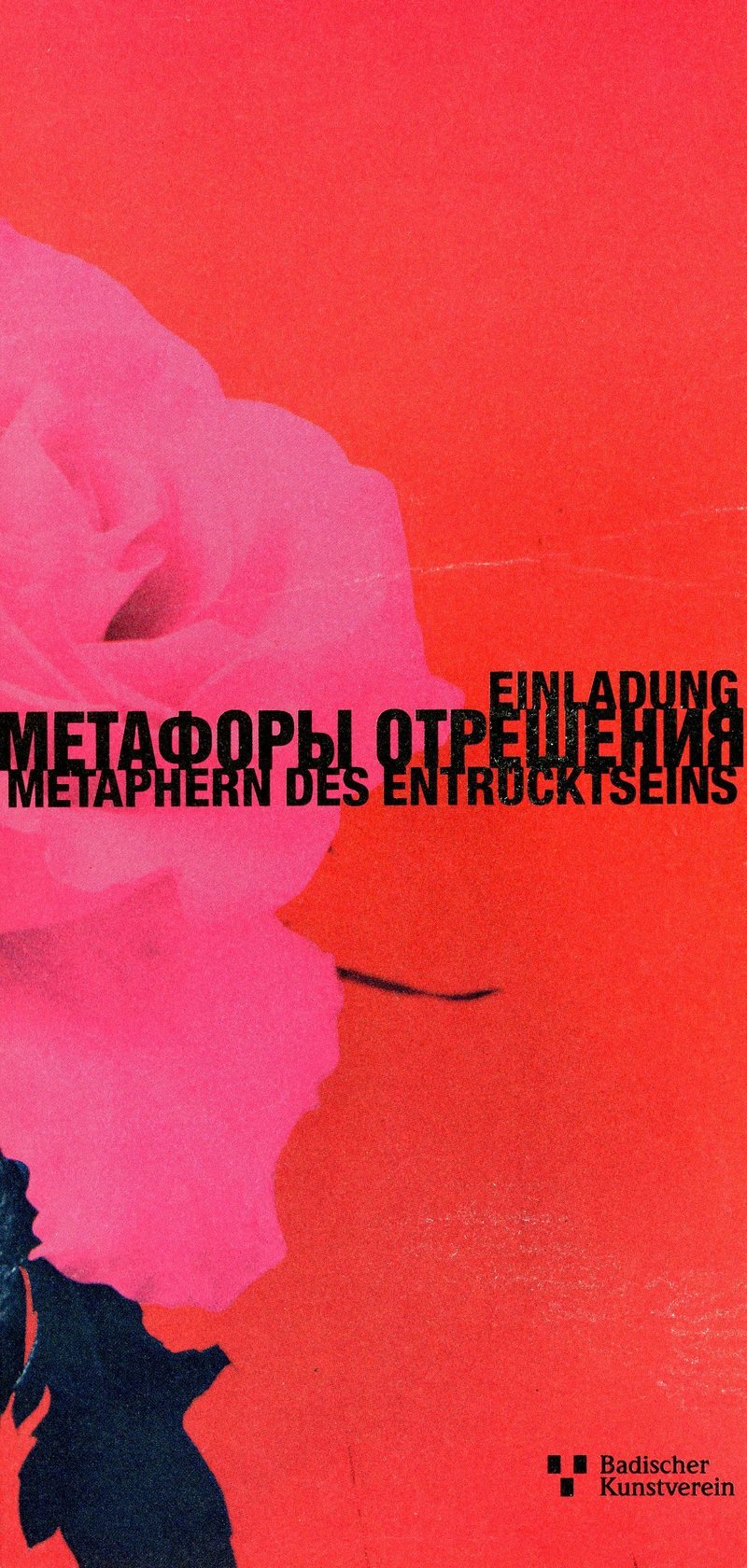
One of the artifacts dating back to Konstantin Goncharov’s early practice is the green wool coat from Garage Archive Collection. It was created in 1989 for the drummer of the band Kino Georgy Guryanov. This item was supposedly sewn specially for the band’s international tour. The coat already reveals elements of “Strict Young Man’s signature style which can be labeled as ‘Petersburg Neo-Historicism’ dating back to the Leningrad art of the 1970s–1980s, and the conceptualization of Petersburg art’s neoclassical idea implemented by Timur Novikov in the 1990s”. [7] Goncharov says in an interview, however, that he “cannot imagine how all this relates to historical costume,” [8] pointing to the fact that his designs are more likely connected with the future than the past.
In this particular case, the coat, which, at first glance, references the overcoat, respects, and even enhances the 1980s fashion silhouette—with its hypertrophied shoulder line, the “bat” sleeve, the length and oversized fit. The coat also illustrates another distinctive feature of garments by Strict Young Man which were developed as total “architectural pieces,” and of deigning clothes as “costume-image”. [9] This is emphasized by the overall silhouette and attention to detail: the multiple tiny fabric-covered buttons hidden in the slot, small secret pockets, the shape of the lapels, and the unusual lining fabric.
Unfortunately, Garage Archive Collection does not contain photographs showing Georgy Guryanov dressed in the coat, but there are pictures of other representatives of St. Petersburg’s beau monde wearing garments by Strict Young Man. One of the photographs shows artist and art historian Andrei Khlobystin posing in a cape designed by Goncharov at the opening of an exhibition of Timur Novikov's collages. The exhibition took place at collector Paul Judelson's New York apartment, where the Leningrad artists stayed in the early 1990s.
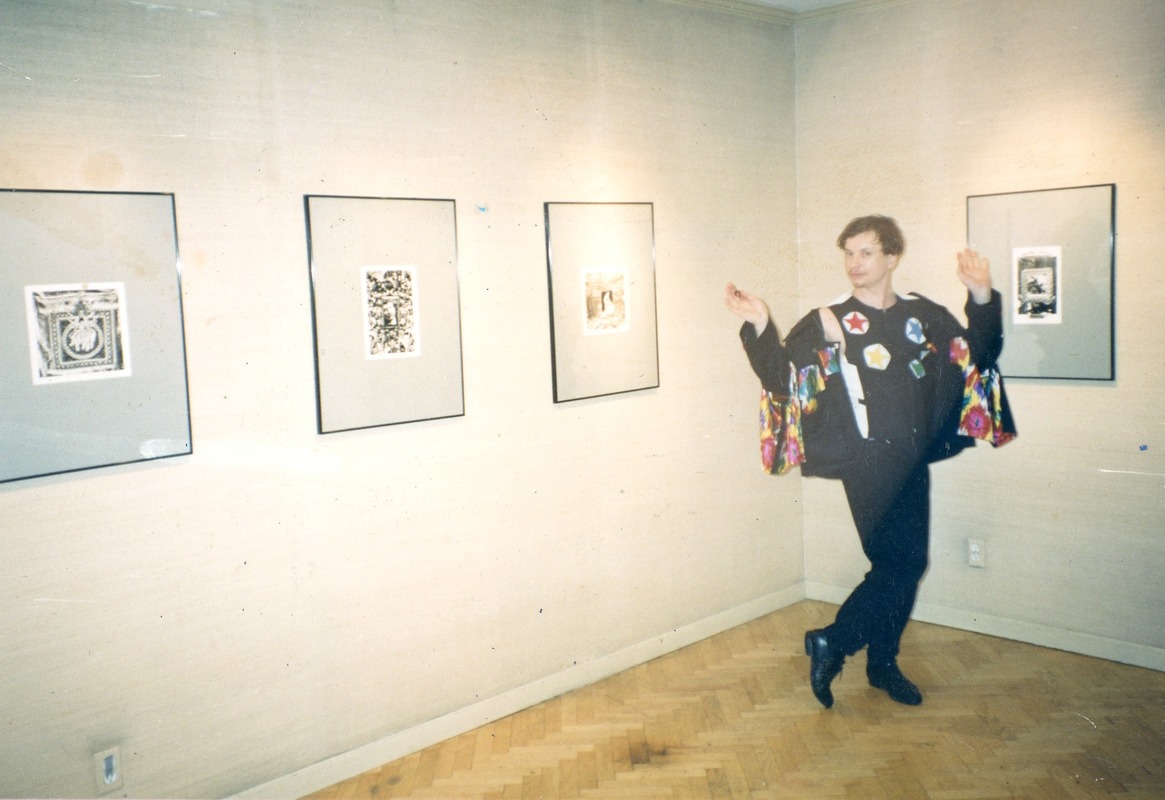
Another series of photographs covers an event that became known in the neo-academic circles as the Ball of Thirty-Six Princes and Princesses. Alexey Sokolov describes it as follows: “In summer 1994, princess Francesca von Thyssen from the House of Habsburgs, together with her Spanish aristocrat friend Pilar, and Irena [Kuksenaite] who was friends with them celebrated their mutual birthday in St. Petersburg. They ordered dresses of the Shamakhan and Russian tsarinas for the Russian Fairy-Tales Ball from us, rented out the Marble Palace, everything was very elegant, even treats were served on silverware. A private jet arrived bringing guests, with thirty-six princes and princesses representing European royal courts onboard”. [10] Photographs in Garage’s Collection show Alla Mitrofanova, Andrei Khlobystin, Olga Tobreluts, Olesya Turkina, Konstantin Goncharov, and other guests at the event. Also wearing Strict Young Man designs are journalist Alyona Spitsyna and architect Michael Cramer. [11]
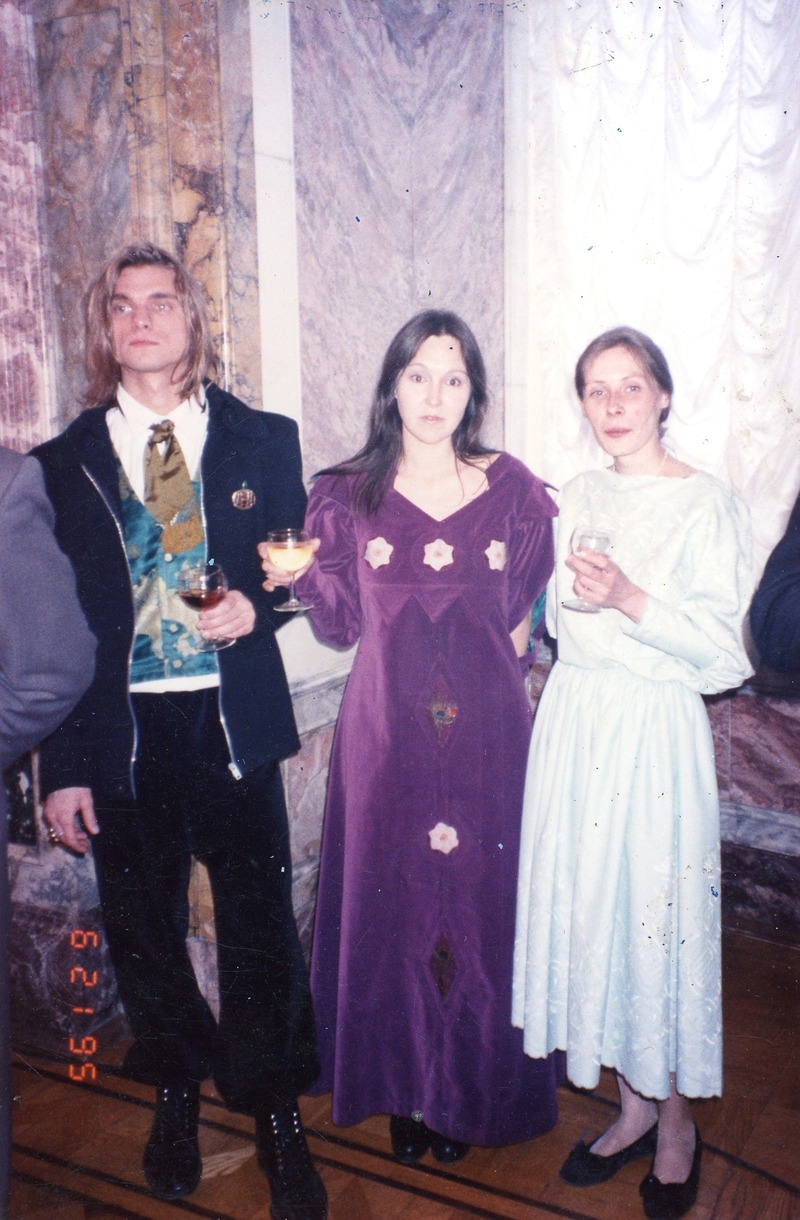
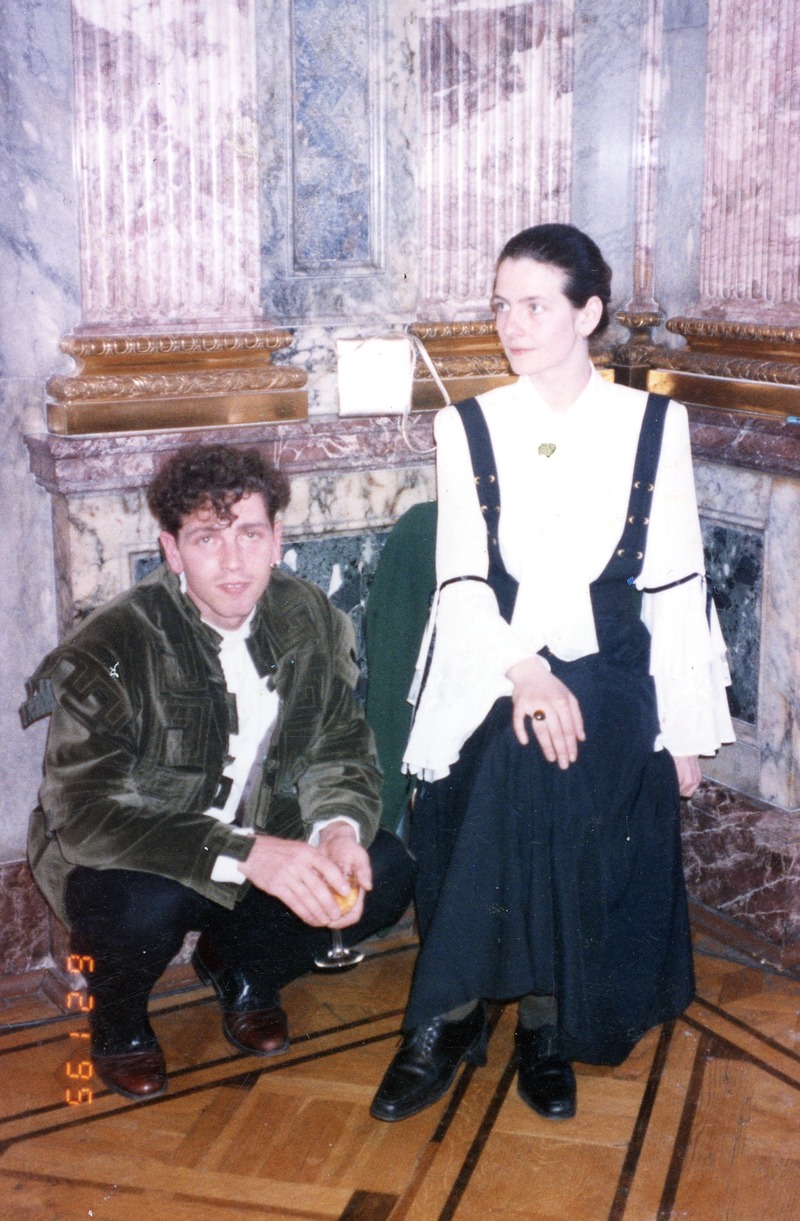
Among the photographs in Garage Archive Collection, there are portraits of Konstantin Goncharov and Alexey Sokolov taken by photographer Yedyge Niyazov in 1993. These black and white shots were taken in a mansard on Griboyedov Canal, where the Strict Young Man atelier was located at that time. Alexey Sokolov is pictured wearing one of the earliest velvet coats designed by them. Behind Konstantin Goncharov stands a mannequin in a silver suit, which consists of a coat-dress and headwear, both items made in 1990-1991. This outfit would be later used in the photoshoot Olympus on the Roof, organized by photographer Hans-Jürgen Burkard together with the New Academy’s professors and students in St. Petersburg in July 1994.
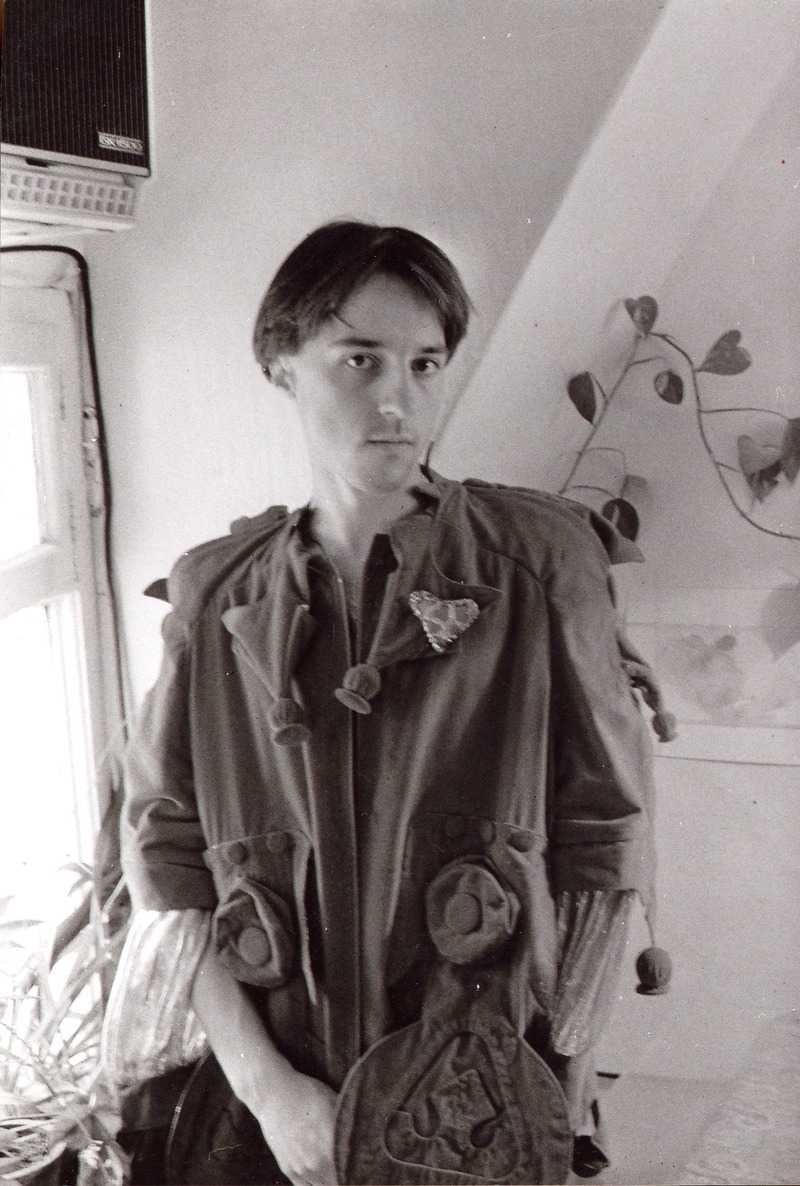
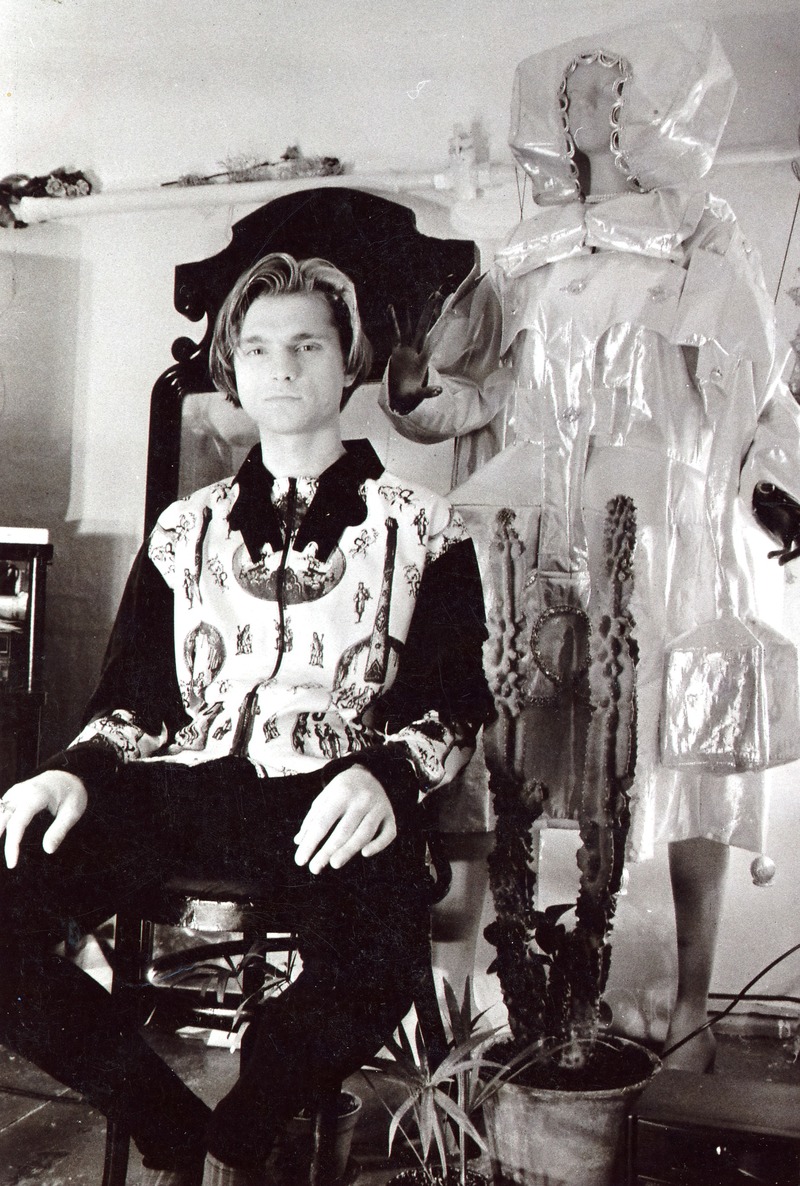
Thanks to the efforts of Alyona Spitsyna, in 1994, the “strict young men” moved from the attic into a new space on 13, Kamennoostrovsky Avenue. The laconic and touching invitation card to the opening of the Strict Young Man fashion gallery featuring a handmade signature is stored in Garage Archive Collection. From this point on, the space on Austrian Square becomes a fashion spot visited by the city’s many famous guests, artists, and musicians.

Senior research fellow at the Newest Trends Department of the State Russian Museum, art historian and curator Yekaterina Andreeva writes in her report on Konstantin Goncharov’s legacy: “Goncharov’s practice reaches its blossom in 1994–1995. In 1995 he created costumes for the ballet Leda and the Swan to the music of Gustav Mahler. The ballet was staged for the Hermitage Theater by Sergey Vikharev, the premier of the Mariinsky Theatre and friend of the artist Bella Matveeva, whose paintings were used in stage design. During the same years, in 1994–1995, Goncharov made around thirty costumes and a cycle of fourteen illustrations for Apuleius’s The Golden Ass. It was a group portrait [Passiones Luci], where Goncharov acted as one of the leading artists together with me, Alexey Sokolov, and Olga Tobreluts. We thought that our task implied making illustrations that would be associated with both Petersburg—where Mikhail Kuzmin published his translation that became a classic—and with world culture. [12] Apuleius, a Late Antiquity author-magus, inspired us to create magical ‘cultural landscapes.’
The project also had an important social aspect, which consisted of bringing together the youth community for a joint months-long performance. As its director, Goncharov recruited several dozens of participants for the shooting on the dance floor: nurses, pop band dancers, even bandits. Goncharov never limited himself to fashion design or multimedia art proper. Together with Novikov, he was shaping the space of culture, a social environment.” [13]
Information about these projects, which were important for Goncharov, is preserved in the record folder “Documentation of Timur Novikov’s project The Walls of the New Academy”—a compilation of photocopies of articles from Russian and international publications assembled by Novikov which cover the activity of the New Academy of Fine Arts in 1995–1998. Novikov put these articles, posters, and photographs on the walls of a corridor in the New Academy premises on 10, Pushkinskaya Street, labeling them as visual promotion and propaganda of the Academy’s achievements. Among the materials selected by Novikov, there are texts and interviews related to the Strict Young Man atelier released after the presentation of The Golden Ass project, foreign press reviews of the show Self-Identification, articles and texts devoted to the premiere and international tour of the ballet Leda and the Swan.

Another critical document dated the mid-1990s is video documentation of the opening of the New Academy’s seminal international exhibition Renaissance and Resistance held in the Marble Palace in June 1994. The video features a short Konstantin Goncharov interview who was one of the contributing artists to the show. Responding to a journalist’s questions, Goncharov announces the soon-to-open “firm and gallery Strict Young Man” and mentions the title of one of the dresses on view at the exhibition.
The Masturbating Pioneer Girl is the famous “gymnasium dress” made of woolen fabric that was used for sewing Soviet school uniforms for girls, with black and white ballet photographs from Timur Novikov’s collection and artificial daffodils embroidered on the bodice. In the early 1990s, the school uniform was abolished, and, using Goncharov’s own words, this dress represented “a slight nostalgic sentiment” for the bygone epoch. Dresses displayed alongside the works of Timur Novikov also get caught on camera.

Making a solemn speech at the opening, Timur Novikov put Konstantin Goncharov’s name on a par with top international artists and designers, anticipating the young couturier’s fame. These words turned out to be prophetic, with recognition happening for Strict Young Man soon afterward. Konstantin Goncharov and Alexey Sokolov began taking part in major international shows, Goncharov’s costume design for The Golden Ass won him the Best Avant-garde Artist of 1995 title at the 1st Moscow International Festival of Avant-garde Collections ALBO-Fashion. In 1995 and 1996 he exhibited with great success at the festival of avant-garde fashion in Georgia. Wearing Strict Young Man garments signified involvement in the art world, and the personality of Konstantin Goncharov, embodied boldly in his clothes-artworks, appeared to be so attractive that it quickly gathered a wide circle of admirers around him. Goncharov’s pieces are in the private collections of Yekaterina Andreeva, Alyona Spitsyna, Avdotya Smirnova, and Arkady Ippolitov, while his foreign devotees include curator Kathrin Becker, Francesca von Habsburg, Princess Katya Galitzine, American gallerist Jane Lombard, and Belgian art historian Agnès Rammant-Peeters.
“The strategy of Novikov and Goncharov is similar to Michel Foucault’s ideas delineated in his essay What is Enlightenment? In short, in order to happen, contemporaneity must be ironically heroized. This is exactly what Goncharov did—using fashion to create an ideal community of his own, which people from the rest of the world, from New York and Erfurt to Tbilisi, were ready to join”. [14]
In an interview devoted to Konstantin Goncharov, his close friend, director of the fashion house KISSELENKO Irina Selyuta, says that the name Strict Young Man was inherently fatal, encapsulating some sort of predetermined unfolding of destiny, or maybe even foresight”. [15] It is not just about Goncharov’s aesthetic strategy and ethical principles. Konstantin died aged 29, to forever remain a dignified and prudent young man, a dreamer sensitive to beauty in his friends’ memory. Yekaterina Andreeva published a touching, gentle obituary in The New World of Art magazine paying homage to Goncharov of whom she speaks as of someone who “made his own conscious choice to move toward the miraculous” and who possessed “the main freedom—that of not being afraid of anything”. [16]
The author is grateful to Alexander Izvekov for help in the preparation of the text and selection of materials.
Notes
1. Timur. To Lie the Truth Only! / Edited by Andreeva Y. St. Petersburg.: Amphora, 2007. P. 216.
2. Goschitskaya K., Kotov V. “The Legend: Konstantin Goncharov and the Strict Young Man” // Sobaka.ru. URL: http://www.sobaka.ru/fashion/heroes/21078.
3. Timur. Pp. 65, 157–158.
4. Kulish A. “A Suitable Costume for Lucius” // OM. 1996. #4. P.74.
5. Kulish A. “A Suitable Costume for Lucius”. P. 74.
6. The exhibition Renaissance and Resistance, curated by Yekaterina Andreeva and Timur Novikov, was prepared by the New Academy of Fine Arts in collaboration with the Newest Trends Department of the State Russian Museum. The show that ran from June 10 to 19, 1994 in the Marble Palace, was dedicated to the history of nineteenth- and twentieth-century photography and the preservation of classical traditions in art. Along with photographs, the display included works by Moscow artists and professors of the New Academy of Fine Arts.
7. Kostrits M. [Goncharov Konstantin] // State Russian Museum presents: Newest Trends Department: History, Collection, Exhibits. Almanac. St. Petersburg: Palaca Editions, 2004. Issue 41. P. 50.
8. Kulish A. “A Suitable Costume for Lucio”. P. 76.
9. Kostrits M. [Goncharov Konstantin] P. 50.
10. Goschitskaya K., Kotov V. “The Legend”.
11. According to all the evidence, the ball was held in 1994, but photographs taken by Andrei Khlobystin show other dates recorded by his camera, 06.21.1995 and 06.22.1995.
12. The project Passiones Luci became part of the program of annual exhibits organized by the Soros Center for Contemporary Art in St. Petersburg, which paid for the materials for the costumes, the production of photographs, the costs of set design and the publication of the catalogues. The authors of the idea of making illustrations were artists Denis Yegelsky and Andrey Medvedev, while the main artist on the project was Konstantin Goncharov. The final show opened on June 28, 1995, in the Marble Palace and the spaces of the New Academy of Fine Arts on 10, Pushkinskaya Street. The Marble Place display (curated by Yekaterina Andreeva) was entitled Passiones Luci and featured 14 computer collages illustrating the novel The Golden Ass, costumes by Konstantin Goncharov in collaboration with Alexey Solovyov (some of them are now in the collections of the State Hermitage Museum and State Russian Museum), Timur Novikov’s panel Cupid and Psyche and video documentation of the filming process. The part displayed in the New Academy (curated by Yekaterina Andreeva and Timur Novikov) was called The Golden Ass. Sketches and Projects and showed the scenery and preparation materials made by Yegor Ostrov, Denis Yegelsky, Andrey Medvedev, Oleg Maslov, and Viktor Kuznetsov and Andrei Khlobystin. The catalogue (designed by Alexander Belosludtsev and Maksim Gudkov) which was an integral element of the project and included articles by Yekaterina Andreeva and Arkady Ippolitov along with the text of Apuleius’s novel in Mikhail Kuzmin’s translation illustrated with collages. On the opening day, an international jury featuring artist Andrew Logan (London; chairman of the jury board), director of the Ateneum Museum of Contemporary Art Tuula Arkio (Helsinki), President of the Cultural Partnership Foundation Jane Lombard (New York) and the staff of the Soros Center for Contemporary Art, awarded the Soros CCA Prize for the Best Artist of the Exhibition to Konstantin Goncharov and Olga Tobreluts.
13. Andreeva Y. “Konstantin Goncharov: The New Man of the Early 1990s”. Unpublished paper read at the academic conference Transformation of the Old and the Search of New in the Art and Culture of the 1990s, January 28–30, 2020.
14. Andreeva Y. “Konstantin Goncharov”.
15. Azarkhi S. V. Stylish People: Introduction to the History of Modern Artistic Gestures. St. Petersburg: Ivan Limbakh Publishing, 2012. P. 219.
16. Andreeva Y. “In Memory of Konstantin Goncharov” // The New World of Art. 1998. #3. P. 62.